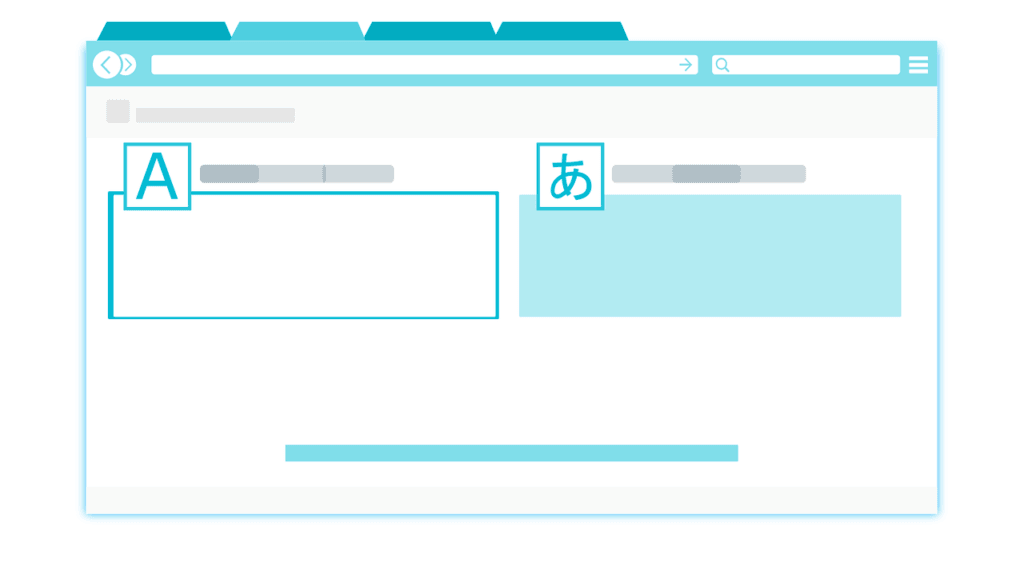This Article has been revised, edited and added to, by Poulomi Chakraborty.
- Understanding the Importance of Currency and Language Switchers in SEO
- Strategic Implementation of Currency and Language Switchers
- Navigating the User Experience with Cultural Insight
- Optimizing Technical Execution for SEO
- Creating a Seamless Switching Experience
- Engaging with Local SEO and Marketing Strategies
- The SEO Impact of Proper Localization
- Embedding Localization into the Fabric of SEO
- Mastering Technical SEO for Localization
- Nurturing Global Link-Building Strategies
- Advanced SEO Tactics for Multilingual Websites
- Crafting a Multilingual Content Strategy
- Enhancing Site Architecture for Multilingual SEO
- Leveraging Localized User Experience Design
- Prioritizing Technical SEO Enhancements
- Elevating User Experience with Seamless Switching
- Enhancing Intuitive Navigation
- Personalizing User Preferences
- Streamlining Content and Currency Conversion
- Localization and Cultural Sensitivity
- Embedding Cultural Insights into Product Development
- Navigating Cultural Nuances in Marketing and Communication
- Ensuring Compliance and Respect for Local Regulations
- Conclusion
Imagine walking into a shop where everything’s labeled in a language you don’t understand, with prices in a currency you don’t use. Confusing, right? That’s exactly how visitors feel on a website without currency and language switchers. In the digital marketplace, making your website accessible and user-friendly for a global audience isn’t just nice to have—it’s essential. With the right SEO strategies for currency and language switchers, you can turn this challenge into your competitive advantage. Let’s unravel the best practices that will not only make your site globally friendly but also boost your SEO efforts, ensuring that your website speaks everyone’s language and shows prices in a currency they recognize.
Understanding the Importance of Currency and Language Switchers in SEO

When it comes to catering to a global audience, the devil is in the details. Currency and language switchers are not just about enhancing user experience; they play a pivotal role in optimizing your site for search engines across different regions. Let’s dive into why these features are critical from an SEO perspective and how they compare in terms of impact.
Boosting User Experience and Engagement
At its core, SEO is about serving users the best and most relevant content. A key component of this is ensuring that users can easily navigate your website in their preferred language and understand pricing in their local currency. This immediate familiarity lowers bounce rates and increases the time spent on the site—two metrics that search engines take seriously when ranking pages.
Imagine a user in France landing on an English website with prices in USD. The extra steps they have to take to translate content and convert prices might lead them to leave the site quicker than if everything was presented in French and Euros. On the other hand, a website that automatically switches to French and displays prices in Euros upon recognizing a visitor from France is more likely to keep that visitor engaged.
Enhancing Local SEO
Language and currency switchers also have a direct impact on your local SEO efforts. Search engines strive to deliver region-specific results, and having your website content available in the local language and currency significantly boosts your chances of ranking higher in local searches.
For comparison, consider two online stores selling handmade goods worldwide. Store A uses a one-size-fits-all approach, with content in English and prices in USD, regardless of the visitor’s location. Store B, however, has implemented language and currency switchers, offering localized experiences for users across different regions. When a user in Japan searches for handmade goods, Store B is more likely to appear in search results with its content in Japanese and prices in JPY, compared to Store A.
Simplifying Content Management
From a content management perspective, implementing currency and language switchers can streamline the process of creating and managing multilingual and multicurrency content. Instead of managing separate pages or sites for each language and currency, switchers allow for a more centralized approach. This not only simplifies content updates and management but also ensures a cohesive SEO strategy across different languages and currencies.
Localizing Content for Global Reach
The process begins with the localization of content, which means adapting your website’s text, images, and other elements to suit the cultural context of your target audience. However, it’s crucial to approach this with SEO in mind. Each piece of localized content should be optimized for the keywords and search phrases specific to each region, taking into account the nuances of language and local search behavior. This dual focus on localization and SEO ensures that your content resonates with the local audience while improving visibility in regional search results.
Implementing Geo-targeting Techniques
Geo-targeting techniques can significantly enhance the effectiveness of your currency and language switchers. By detecting a user’s location and automatically presenting the website in their local language and currency, you create an instant connection. But from an SEO perspective, this automated personalization must be handled carefully to ensure it aligns with Google’s best practices, avoiding any potential penalties for cloaking or deceptive practices. Properly configured hreflang tags and clear options for users to change their location settings are essential components of a geo-targeting strategy that complements your SEO efforts.
Enhancing Site Structure for Multilingual SEO
The structure of your website plays a critical role in how search engines index and rank your content across different languages and regions. A clear, logical site structure that includes language-specific subdirectories or subdomains helps search engines understand the organization of your multilingual content. This structure should be supported by an intuitive navigation system that guides users and search engine crawlers alike through your website’s various language versions, enhancing the overall discoverability of your content.
Building Inbound Links from Local Sources
A robust inbound linking strategy is as vital to international SEO as it is to domestic campaigns. For startup founders, this means cultivating links from local sources in each target market. Such links not only drive local traffic to your site but also signal to search engines the relevance and authority of your content within those regional contexts. Collaborating with local influencers, engaging with regional online communities, and listing your site in local directories are effective strategies for building a strong portfolio of local inbound links.
Strategic Implementation of Currency and Language Switchers

Implementing currency and language switchers on your website involves more than just adding a dropdown menu. It’s about creating a seamless experience that guides users naturally, without causing confusion or frustration.
URL Structure for Multi-language Sites
One critical aspect of implementing language switchers is deciding on the URL structure for your multilingual content. There are primarily three approaches: using subdomains (fr.example.com), subdirectories (example.com/fr/), or country-code top-level domains (example.com and example.fr). Each has its SEO implications. Subdirectories are generally favored by SEO professionals because they consolidate domain authority and are easier to manage. They signal to search engines that the content is part of the same site but targeted to different language speakers, helping to boost the site’s overall SEO performance.
Handling Currency Conversion
For currency switchers, the key is in providing accurate, real-time conversions without impacting page load times. Integrating a reliable currency conversion API that updates based on current exchange rates ensures that your prices are always accurate, enhancing trust with your international customers. Additionally, it’s important to give users the option to switch currencies manually since automatic detection might not always align with their preferences.
SEO and Hreflang Tags for Language Variants
When it comes to SEO for multilingual sites, hreflang tags are your best friend. These HTML tags tell search engines which language you are using on a specific page, allowing them to serve that page to users searching in that language. Proper use of hreflang tags can prevent duplicate content issues across different language versions of your site and ensure that the correct language version appears in search results, significantly enhancing user experience and SEO.
Navigating the User Experience with Cultural Insight

Understanding and respecting cultural differences is key to the strategic placement and operation of currency and language switchers. It’s not just about offering alternatives; it’s about presenting them in a way that feels intuitive and respectful to users from different regions.
Cultural Nuances in Design Choices
The design of your currency and language switchers should reflect an understanding of cultural preferences. For instance, the color scheme, symbols, and even the positioning on the page may carry different connotations across cultures. Conducting user experience (UX) research specific to each target market can inform these design choices, ensuring the switchers are both accessible and culturally appropriate.
Language Selection and Local Dialects
When implementing language switchers, consider the diversity of dialects within a single language. Offering variations that cater to significant dialects not only improves SEO but also enhances the user’s connection to your brand. For example, providing different versions of Spanish to cater to users in Spain, Mexico, and Argentina can significantly boost engagement by respecting and acknowledging regional differences.
Optimizing Technical Execution for SEO
The technical setup of your currency and language switchers is a critical factor in how search engines understand and rank your website in different regions.
SEO-Friendly URL Configuration
Choosing the right URL structure for your multilingual site can profoundly impact its global SEO performance. Opt for a clear and consistent structure that includes language or country codes. This clarity helps search engines index your site more effectively and improves the user’s ability to navigate between versions.
Leveraging Local Hosting and CDN
For startups targeting multiple countries, local hosting or a Content Delivery Network (CDN) can significantly reduce load times and improve site performance for international users. Faster load times not only enhance user experience but also contribute positively to SEO rankings. Moreover, a CDN can help manage traffic spikes, ensuring your site remains accessible during high-demand periods.
Creating a Seamless Switching Experience
The transition between currencies and languages should be as seamless as possible, avoiding any jarring disruption in the user’s journey.
Smooth Transition Mechanisms
Implement mechanisms that ensure a smooth transition when users select a different language or currency. This might include preserving the user’s place on the page or ensuring that any items in their shopping cart are carried over when the switch occurs. Such attention to detail significantly enhances the user experience and can increase conversion rates.
Remembering User Preferences
Utilize cookies or session storage to remember a user’s language and currency preferences for subsequent visits. This personal touch reduces friction for returning visitors, making your website feel welcoming and familiar. Moreover, it signals to users that your platform values and caters to their individual needs.
Engaging with Local SEO and Marketing Strategies

Integrating currency and language switchers should be part of a broader strategy that includes local SEO and targeted marketing efforts.
Localized Content Marketing
Beyond translating your website, create content marketing strategies tailored to each target market. This includes blogs, social media content, and email marketing campaigns that address local interests, holidays, and trends. Localized content marketing not only boosts SEO but also deepens the engagement with your brand.
Feedback Loops and Continuous Improvement
Establish feedback mechanisms to gather insights from your international users about their experience with your currency and language switchers. This direct feedback, coupled with analytics, can guide continuous improvements, ensuring your global strategy remains aligned with user needs and preferences.
The SEO Impact of Proper Localization
Localization goes beyond mere translation. It involves adapting your content to reflect the cultural nuances and preferences of your target market. Proper localization impacts SEO by increasing relevance, engagement, and consequently, rankings in localized search queries.
Localized Content and User Engagement
Localized content that resonates with the cultural context of your audience can dramatically increase engagement. Engaged users are more likely to share content, link back to your site, and convert, signaling to search engines that your site provides valuable content for that locale. This can lead to higher rankings in local search results and increased visibility among your target audience.
Building Local Backlinks
A site that is well-localized and offers content relevant to a specific geographic audience is more likely to attract backlinks from local sources. These local backlinks are highly valuable for SEO, as they further signal to search engines the relevance and authority of your site in a specific region. Engaging with local influencers, participating in community events, or contributing to local publications can all be effective strategies for building local backlinks.
Enhancing Local Search Presence with Reviews
Encouraging users to leave reviews in their local languages can also boost your SEO. Reviews not only provide fresh, localized content for your site but also improve your visibility in local search results. Search engines view sites with a higher number of quality reviews as more trustworthy and relevant, leading to better rankings.
Embedding Localization into the Fabric of SEO
Localization and SEO are intertwined in a dance that, when choreographed correctly, leads to a harmony that search engines and users alike find irresistible. The secret lies in embedding localization deep into the fabric of your SEO strategy, making it a core aspect of your digital identity.
Cultivating Local Relevance through Content
Creating content that speaks directly to local markets is a critical step in achieving relevance and authority. This involves not just language translation but also the inclusion of local expressions, references, and nuances that resonate with the local audience. Moreover, addressing local issues, trends, and interests can position your startup as a relevant and engaged member of the community, further boosting your SEO by increasing user engagement and shareability.
Leveraging Local Keywords and Search Behavior
Understanding and incorporating local search behavior into your keyword strategy is paramount. This includes not only translating your main keywords but also researching how your target audience in each locale searches for your products or services. Local slang, alternative phrases, and region-specific search terms can provide your website with a competitive edge in local search results. Tools like Google’s Keyword Planner, filtered by country and language, can offer valuable insights into local search trends.
Mastering Technical SEO for Localization

The technical aspects of SEO provide the scaffolding upon which your localized content can shine. Ensuring that your website’s structure supports and enhances your localization efforts is key to maximizing your international SEO impact.
Implementing Hreflang Tags Correctly
Hreflang tags are critical for multilingual websites, as they signal to Google which version of a page is intended for speakers of a particular language or residents of a specific country. Proper implementation of hreflang tags helps prevent duplicate content issues and ensures that users are directed to the most relevant version of your site, thereby improving user experience and search visibility.
Structuring URLs for Global Accessibility
The structure of your URLs plays a significant role in how search engines and users perceive your site. A clear, logical URL structure that incorporates language or country codes not only aids in organizing your site but also enhances its accessibility and indexability by search engines. Whether you choose subdomains, subdirectories, or country-code top-level domains, consistency and clarity are key.
Nurturing Global Link-Building Strategies
Link building in a global context requires a nuanced approach that respects and leverages local networks and publications. Building relationships with local influencers, businesses, and media can help acquire high-quality, locally relevant backlinks. These backlinks not only drive targeted traffic but also enhance your site’s authority in local markets, a crucial factor in international SEO success.
Engaging with Local Communities and Media
Actively participating in local communities and engaging with local media can lead to natural link-building opportunities. Sponsor local events, contribute to local publications, or participate in community projects to increase your visibility and relevance in the target locale. Such engagement not only builds backlinks but also enhances your brand’s reputation and trustworthiness among the local audience.

Related: Check out our free SEO suite

Advanced SEO Tactics for Multilingual Websites
Going beyond basic implementation, advanced SEO tactics can make a substantial difference in how effectively your multilingual website reaches and resonates with international audiences.
Dynamic Content Delivery Based on User Preferences
Leveraging user data to dynamically deliver content in the preferred language and currency can significantly enhance the user experience. This involves using browser language settings, IP addresses, or user account preferences to serve the most relevant version of your site. However, it’s crucial to always provide users with the option to manually select their language and currency, as assumptions based on location or browser settings might not always align with user needs.
Utilizing Local Keywords and Semantics
For each language version of your site, conducting thorough keyword research that takes into account local search terms, slang, and semantics is essential. Incorporating these local keywords into your content, meta tags, and ALT attributes not only improves SEO but also makes your site more relatable to the local audience. It’s about speaking their language in the truest sense, which search engines recognize and reward in search rankings.
Schema Markup for International Sites
Implementing schema markup for multilingual sites can enhance search engines’ understanding of your site’s structure and content, leading to better visibility in search results. For instance, using the “alternateHreflang” attribute in your schema helps search engines identify the relationship between different language versions of your site, ensuring that users are directed to the correct language version in search results.
Crafting a Multilingual Content Strategy

A nuanced content strategy is the backbone of successful SEO for multilingual websites. This goes beyond mere translation to involve the creation of content that is deeply aligned with the preferences, interests, and search behaviors of your target audience in each language or region.
Localized Keyword Optimization
Each market has its unique keyword trends and user search patterns. Conducting in-depth keyword research for each language version of your site ensures that your content resonates with local search queries. Utilize local SEO tools and engage with native SEO experts to uncover high-value, locally relevant keywords that can drive targeted traffic to your site.
Cultural Customization and User Intent
Understanding the cultural context and user intent behind search queries in different languages is crucial. Tailor your content to match the cultural nuances and specific needs of your audience in each region. This might mean emphasizing certain products, services, or information that aligns with local interests and preferences.
Enhancing Site Architecture for Multilingual SEO
The structure of your multilingual website plays a significant role in how effectively it can be crawled, indexed, and ranked by search engines across different regions.
Strategic Use of Subdomains and Subdirectories
Deciding between subdomains, subdirectories, or ccTLDs (country code top-level domains) for your multilingual site structure has implications for your global SEO strategy. Subdirectories (e.g., example.com/fr/) are often favored for their simplicity and the consolidated domain authority they offer, but the best choice varies based on your specific business goals and operational capabilities.
Implementing Language and Region-Specific Sitemaps
Create separate sitemaps for each language or regional version of your website. This helps search engines more efficiently crawl and index your multilingual content, improving visibility in local search results. Ensure these sitemaps are correctly linked to from your main sitemap and submitted to search engines via their respective webmaster tools.
Leveraging Localized User Experience Design

The user experience (UX) of your multilingual site significantly impacts its SEO performance. Search engines favor websites that provide a seamless, intuitive experience for users, which includes how easily they can navigate between different language versions.
Intuitive Language Switching Options
Make it easy for users to switch between languages with clear, accessible language selection options. Consider the placement and design of these options carefully, ensuring they are visible without interrupting the user journey. Remembering user preferences for future visits further personalizes the experience, encouraging longer, more engaging visits.
Mobile Optimization Across Languages
With the increasing predominance of mobile browsing, ensuring that your multilingual website is fully optimized for mobile users is non-negotiable. This includes responsive design, fast loading times, and mobile-friendly navigation features, tailored for each language version of your site.
Prioritizing Technical SEO Enhancements
The technical underpinnings of your website must be finely tuned to support multilingual SEO efforts. This involves addressing aspects that are often overlooked but can have a significant impact on your site’s global search performance.
Accelerating Page Load Times
Speed is a universal language. Ensuring that all language versions of your site load quickly is crucial for keeping bounce rates low and improving user engagement. Utilize caching, image optimization, and CDN services to enhance load times for users worldwide.
Structured Data for Multilingual Content
Use structured data to mark up content in different languages, helping search engines understand the context and relevance of your pages. This can include using schema.org markup for articles, products, reviews, and more, specifying the language and potentially the country target for each piece of content.
Elevating User Experience with Seamless Switching
While the technical SEO aspects are crucial, the end goal is to create a seamless and intuitive experience for users navigating between different currencies and languages.
Intuitive Design for Switcher Placement
The design and placement of your currency and language switchers should be intuitive and easily accessible, without cluttering the user interface. Placing these switchers prominently on your site, such as in the header or footer, ensures that users can effortlessly find and use them without disrupting their browsing experience.
Remembering User Preferences
Enhancing user experience involves remembering their language and currency preferences across sessions. Utilizing cookies to save these preferences means that returning visitors are greeted with their chosen settings, making your site feel more personal and user-friendly. This attention to detail can significantly boost user satisfaction and loyalty.
Continuous Optimization and User Feedback
Engaging with your audience to gather feedback on their experience with your currency and language switchers can provide invaluable insights for continuous optimization. A/B testing different implementations of switchers can also reveal preferences and trends that may not be immediately apparent, allowing you to refine your approach and better meet user needs.
Enhancing Intuitive Navigation

The cornerstone of seamless switching lies in intuitive site navigation. Users should be able to effortlessly find and utilize currency and language switchers without detracting from their overall site experience.
Context-Aware Switching Options
Incorporate context-aware switching options that are intelligently displayed based on user behavior or preferences. For instance, if a user frequently switches to a particular language or currency, your website can proactively suggest this option upon their return. This level of personalization not only streamlines the user experience but also conveys a sense of attentiveness to user needs.
Visual and Interactive Clarity
The design of your switchers should be visually distinct and easily accessible, yet seamlessly integrated into the overall design of your website. Consider using universally recognized icons and ensuring that the switcher is located in a prominent, consistent place across all pages. Interactive elements like hover effects can further enhance visibility and usability, making the switching process as intuitive as possible.
Personalizing User Preferences
A personalized user experience is key to engaging and retaining a global audience. By remembering and automatically applying user preferences for language and currency, startups can significantly enhance the user journey on their site.
Leveraging Browser and Location Data
Utilize browser settings and location data to make educated guesses about a user’s preferred language and currency, presenting these options upon their first visit. This immediate personalization can make a strong first impression, showing users that you value their convenience and time.
Persistent Preferences Across Sessions
Implement mechanisms to remember user preferences for language and currency across sessions. This could involve the use of cookies or account-based settings for logged-in users. By eliminating the need for users to make the same selections with each visit, you streamline their experience, making your website feel more like a welcoming, familiar space.
Streamlining Content and Currency Conversion
The transition between different languages and currencies should be smooth and efficient, ensuring that users don’t experience any disruption in their browsing or shopping experience.
Real-Time Currency Conversion
For ecommerce startups, offering real-time currency conversion is essential. Integrate a reliable and up-to-date currency conversion tool that provides users with accurate pricing information in their chosen currency. This transparency in pricing helps build trust and can significantly impact purchasing decisions.
Dynamic Content Adaptation
Ensure that switching between languages does not reset the user’s navigation path or remove items from their shopping cart. Dynamic content adaptation means that any action taken by the user—be it adding a product to the cart or selecting a specific category—is retained regardless of the language or currency switch. This continuity is key to providing a frictionless browsing experience.
Localization and Cultural Sensitivity
True localization extends beyond translation and currency conversion to encompass a deep respect for cultural differences and sensitivities. Tailoring content, images, and even marketing strategies to align with cultural norms and expectations can make a world of difference in how your brand is perceived internationally.
Cultural Customization of Content
Customizing content to reflect local holidays, traditions, and news can significantly increase your site’s appeal to a global audience. This approach shows respect for the local culture and demonstrates that your brand values its relationship with customers from diverse backgrounds.
Responsive Customer Support in Local Languages
Providing customer support in users’ native languages is another crucial aspect of localization. This includes not only having multilingual support staff but also ensuring that help documents, FAQs, and automated support tools are available in all supported languages.
Embedding Cultural Insights into Product Development
The first step toward genuine localization involves integrating cultural insights directly into product development and design. This process ensures that your offerings are not only linguistically but also culturally relevant to each target market.
Conducting In-depth Cultural Research
Begin with comprehensive cultural research to understand the behaviors, preferences, and pain points of your target demographics. This research should inform every aspect of product development, from design aesthetics and color schemes to functionality and user interface. Remember, what works in one culture may not resonate—or could even offend—in another.
Customizing Products to Fit Cultural Needs
Tailor your products or services to meet the specific needs and cultural practices of each market. This might involve modifying product features, adapting marketing strategies, or even changing product names to ensure cultural appropriateness and relevance. Customization demonstrates respect for and understanding of local cultures, significantly enhancing user engagement and brand loyalty.
Navigating Cultural Nuances in Marketing and Communication

Marketing and communication strategies must be carefully crafted to reflect the cultural context of each target audience. This sensitivity is crucial for building meaningful connections and avoiding misunderstandings that could harm your brand’s image.
Adapting Messaging and Imagery
Develop marketing campaigns and collateral that are specifically designed for each locale, taking into account local languages, idioms, and cultural references. Imagery, symbols, and color usage should also be chosen with cultural significance in mind to ensure they convey the intended message without causing offense.
Leveraging Local Channels and Influencers
Identify and engage with local channels and influencers who resonate with your target audience. These local voices can lend authenticity to your brand and help navigate the cultural landscape more effectively. Their endorsement can serve as a powerful tool in building trust and credibility within new markets.
Ensuring Compliance and Respect for Local Regulations
Respecting local laws and regulations is a non-negotiable aspect of global expansion. This compliance is not only legal but also cultural, as it reflects your startup’s commitment to operating responsibly within each market.
Understanding Legal and Regulatory Frameworks
Familiarize yourself with the legal and regulatory frameworks governing your industry in each target market. This includes data protection laws, consumer rights, and advertising standards. Compliance demonstrates respect for local norms and institutions, reinforcing your brand’s reputation as a trustworthy and ethical player.
Culturally Sensitive Customer Service
Offer customer service that is not only multilingual but also culturally informed. Customer service representatives should be trained on cultural nuances and sensitivities to interact effectively with customers from diverse backgrounds. This level of understanding can enhance customer satisfaction and foster a positive image of your brand.
Conclusion
In the vast digital landscape, mastering the art of currency and language switchers is more than just a technical necessity—it’s a powerful statement of inclusivity and user-centricity. By weaving together advanced SEO strategies with a keen sensitivity to cultural nuances, businesses can craft websites that transcend geographical and linguistic barriers, fostering a global community of engaged users.
This approach not only propels your site up the search rankings but also builds a bridge of understanding and respect between your brand and its diverse audience. As we navigate the complexities of global digital marketing, the integration of currency and language switchers stands out as a beacon of best practice, illuminating the path towards a more connected and accessible online world.
Read Next


















